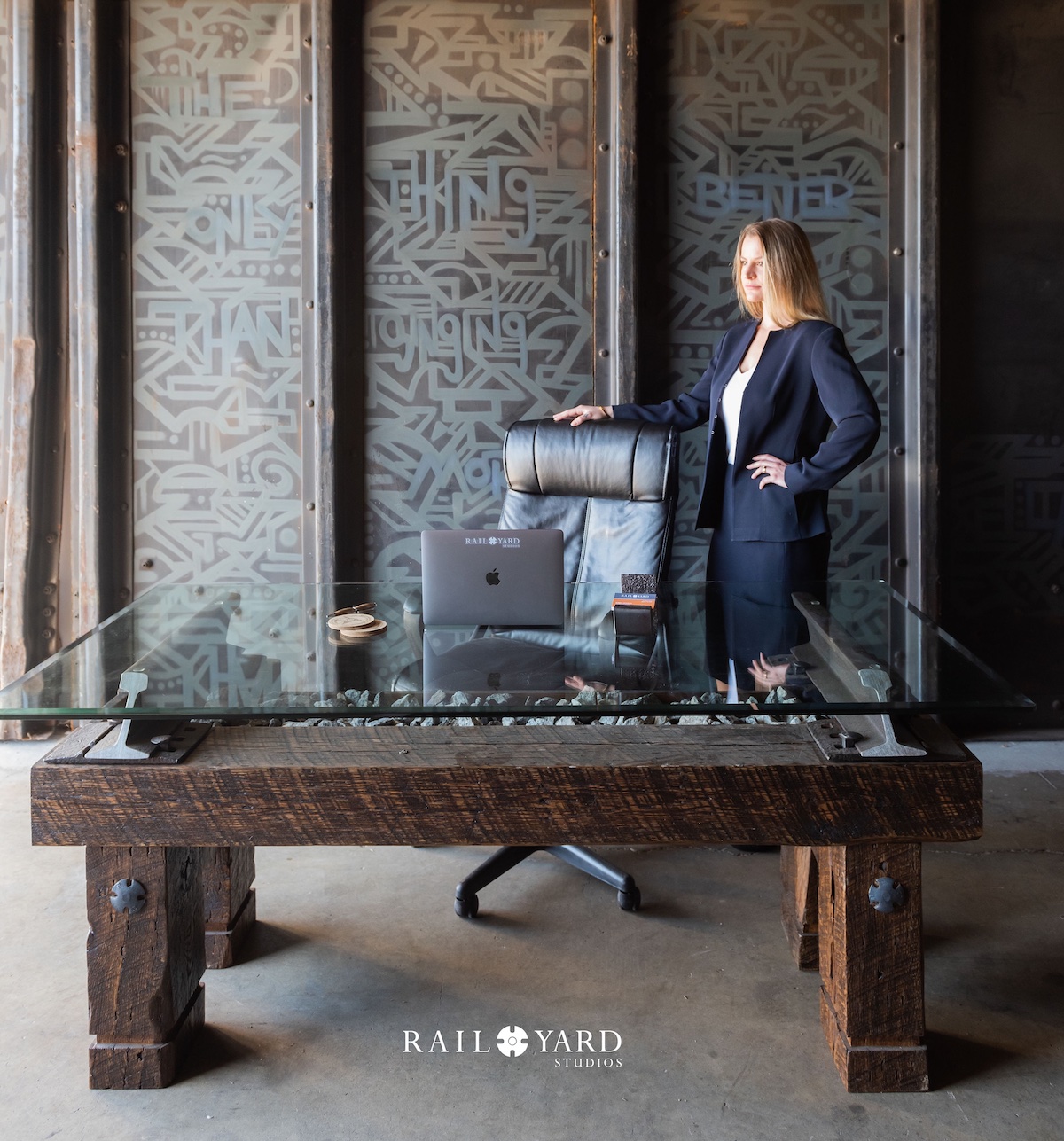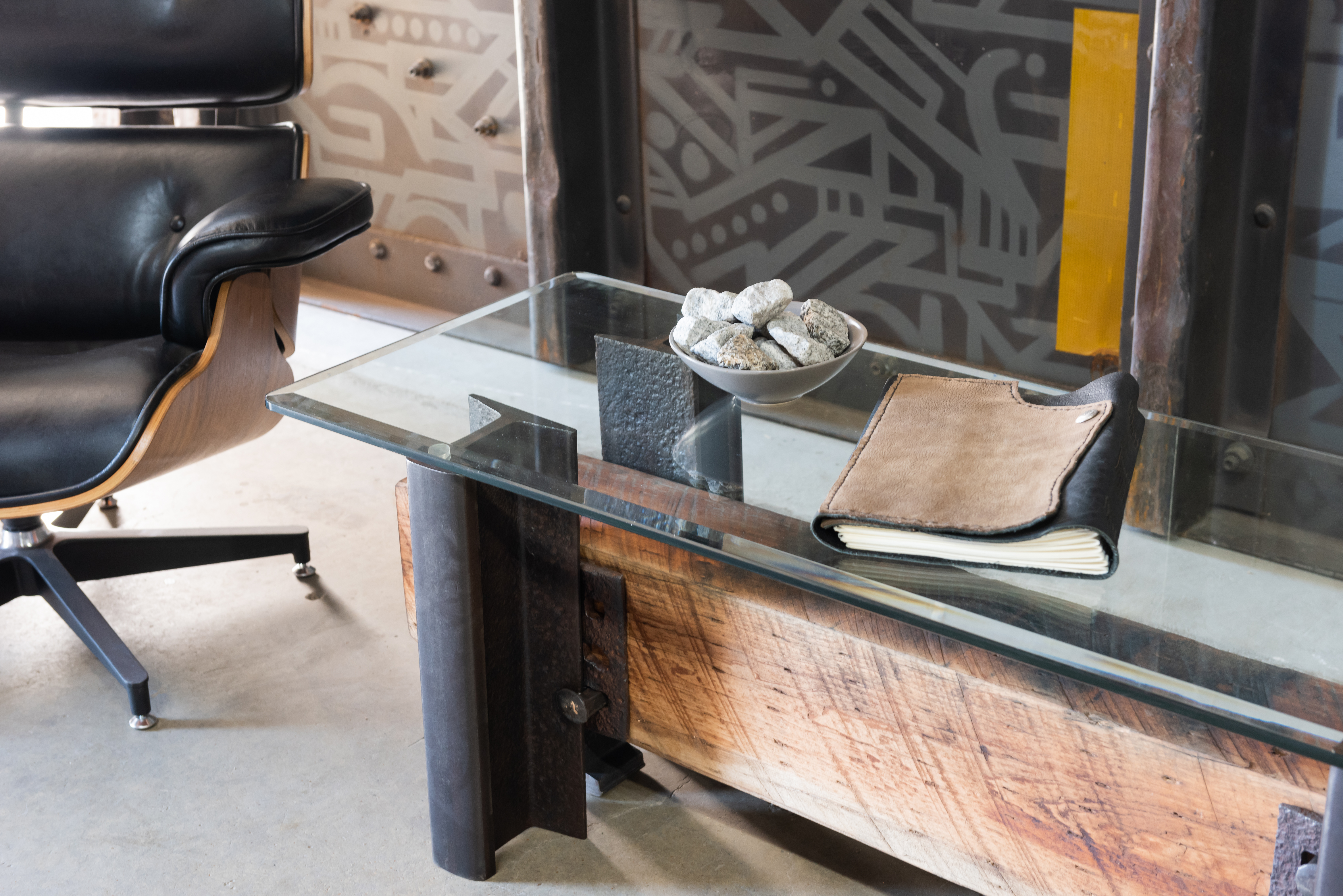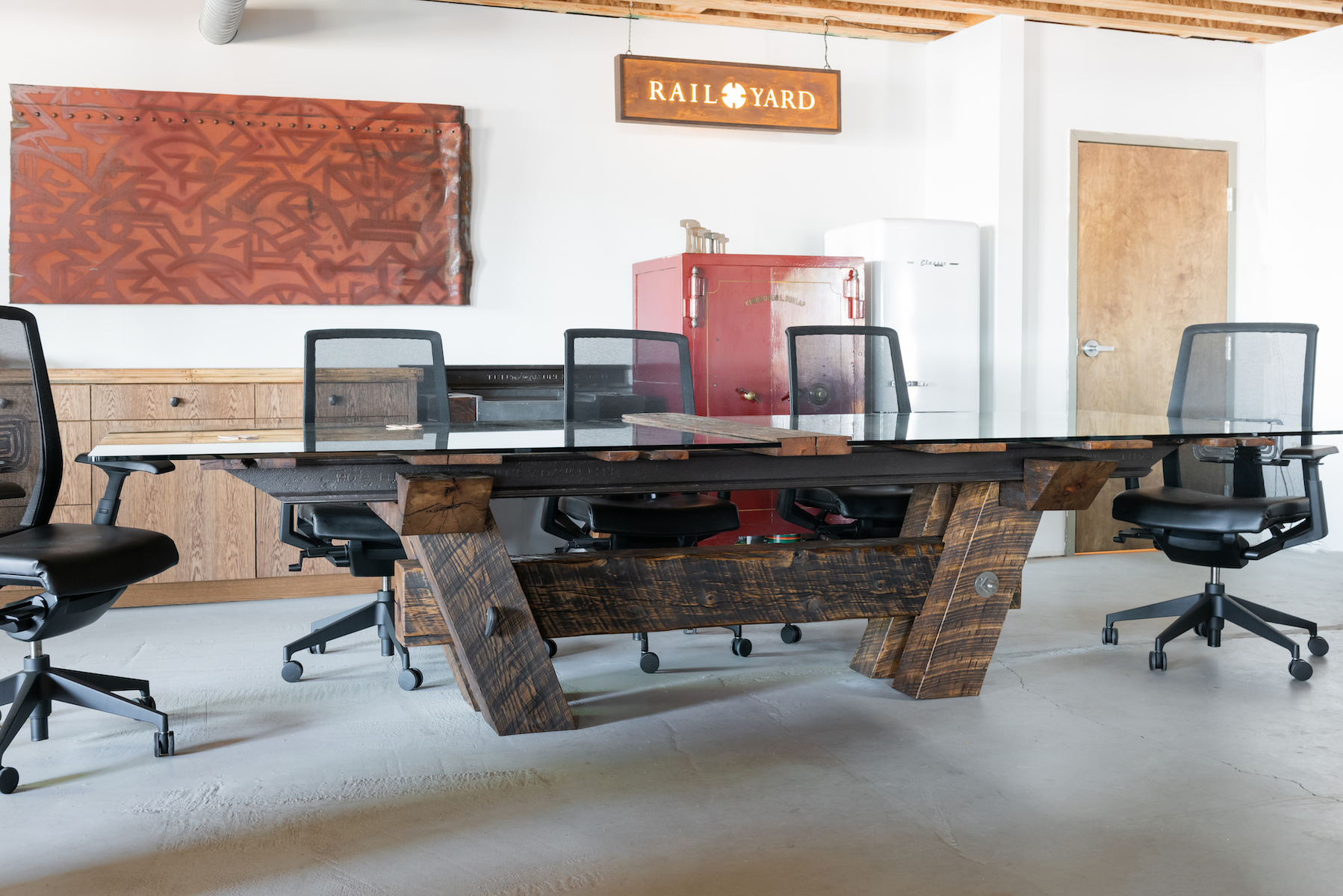
Built to Last
Posted by Robert Hendrick on Aug 10th 2021
We craft our entire furniture collection – beds, desks, coffee tables and more, the way things used to be built.
Solid.
Heavy.
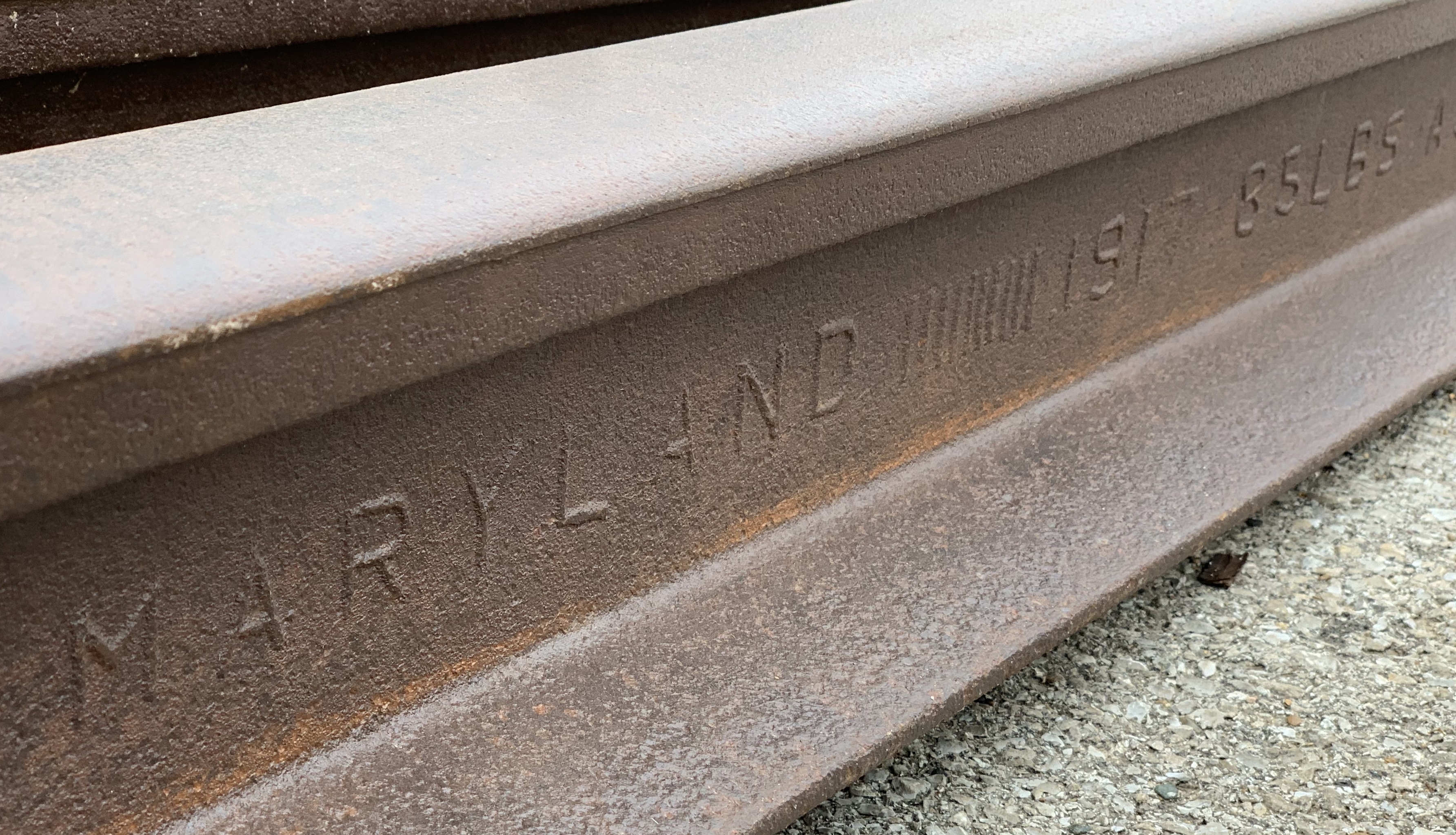 Designed to stand the test of time.
Designed to stand the test of time.
The materials we use in our benches, tables and all of our furniture demand that sort of commitment to quality and longevity.
We’re preserving a bit of history working with steel such as what Andrew Carnegie produced in his mills in Pittsburgh in the late 1800s and early 1900s. Or rail from the Sparrow Point Foundry in Baltimore, Maryland.
Alloy like this built the backbone of the nation in the form of the railroad.
Rusted and pitted from exposure to the elements, the dark patina of the weathered material attests to the authenticity of our product. The rails show signs of wear from decades of railcars drawn by steam and diesel locomotives traversing the head of the rail. Over the years, it develops a pouty lip where the rail has been compressed down beneath the flanged wheel of vintage boxcars, heavily laden tankers and the more intermodal containers.
And it’s still here.
Over 100 years into its service life, the rails, the plates, and even the spikes remain in working condition.
In fact, you can still read the manufacturing information on the web of the rails in most cases. That brand tells the foundry name, the month and year of manufacture and the weight per yard of rail.
Those brands connect our furniture to the builders of the Industrial Age.
Massive hardwood timbers take the role of taming that old world steel that served as the currency for the Robber Barons of the Industrial Age.
We use crossties. But our ties are special.
We hand select these wood beams from culls – seconds – that we get from crosstie suppliers. We source woodstock with imperfections – knots, bark seams, and other features that render them unusable for the railroad, but provide great character to our tables, benches and other furniture.
Big timber requires woodworking tools like we use out in the field for the railroad or for timber frame homes and structures.
We prefer the old school hand tools for some things. You’ll find railroad claw bars and spike mauls in our shop – tools that have remained virtually unchanged for the last century. That’s because thick, heavy railroad spikes attach tie plates and rail in the furniture we craft.
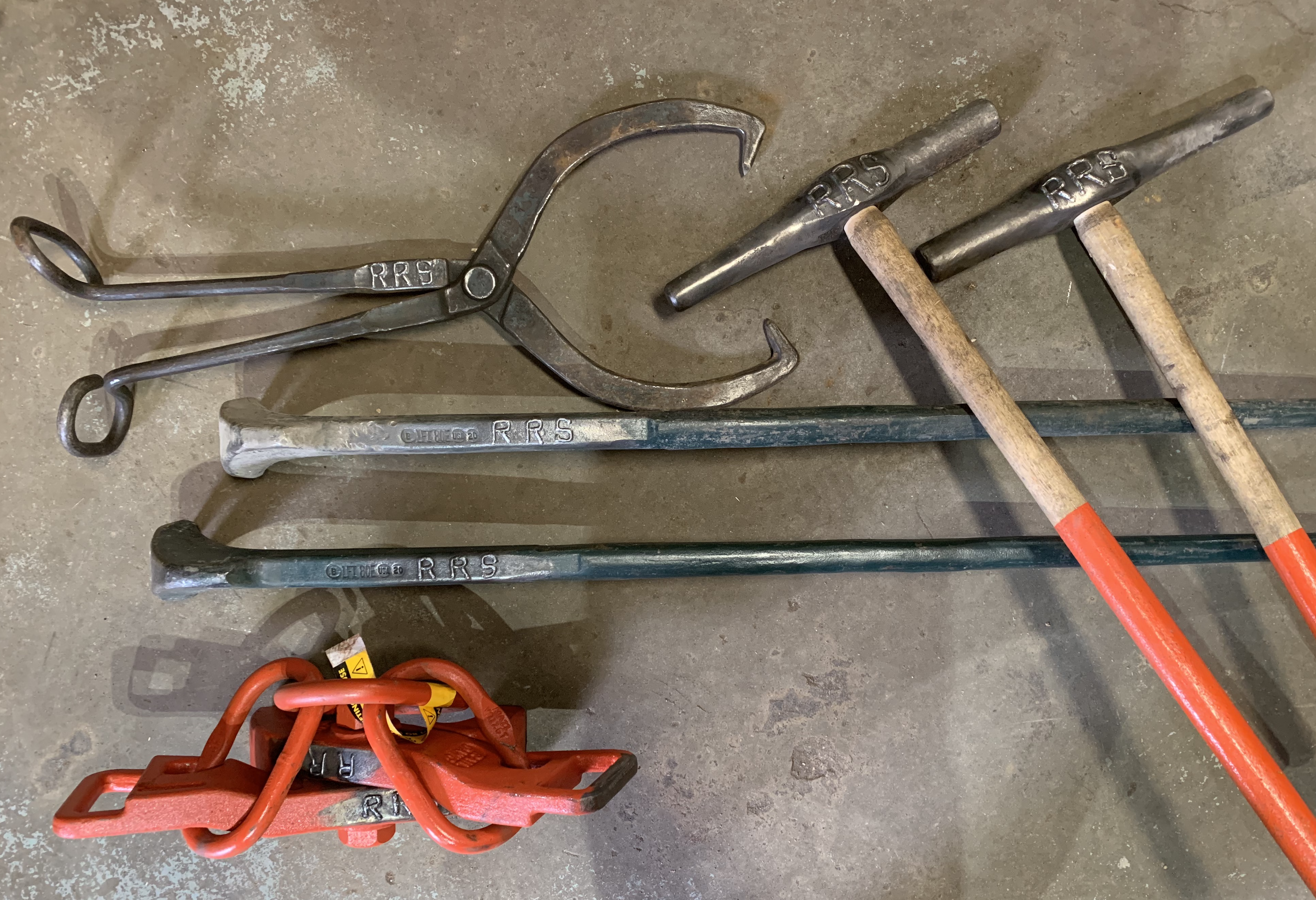 It works, and it works well.
It works, and it works well.
It’s held the railroad together for over a century. It’s going to hold our furniture together for at least that period of time.We temper our luddite ways with modern conveniences like impact drivers and high-speed, high-capacity saws. Still the final assembly inevitably comes back to the hands-on approach that have served railroaders so well for the last 120 or more years.
Even though we work with large-scale materials, we remain committed to the details.
The handwork finishing out a piece culminates with the installation of a date nail.
We take these artifacts from abandoned rail beds and give them new purpose. A number embossed in the dime-sized head of the nail displays the date of manufacture of a tie. Scavenged from the rotted old ties of a railbed, we reinstall them to number and catalog each piece we offer.
The materials have served their purpose in harsh conditions for decades or over a century.
The furniture we craft from those same materials will preserve them for centuries to come.

